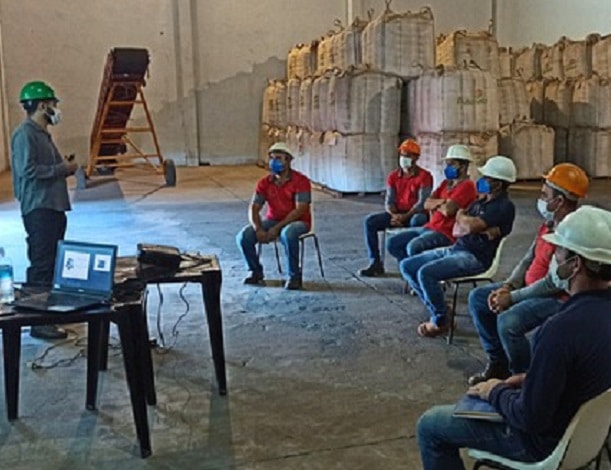Half of all employers may need to reassess their health and safety provision in order to ensure the wellbeing of staff working in hybrid environments.
That’s the suggestion from a study of health and safety professionals representing 447 companies from a technology platform for safer workplaces whose data revealed that only one in two firms are providing safety training for staff based partly at home.
Authors say that, against the context of a shifting societal attitude towards the workplace, and a sharp increase in hybrid working models, these figures highlight how businesses must act now to adequately protect workforces in a more fluid and remote office environment.
This means organisations will have to adapt their approach to accommodate for each individual. For most organisations this home-working and hybrid model will mean a comprehensive risk assessment.
But while nearly six out of ten firms are planning on carrying out new risk assessments for their hybrid team, there’s a substantial minority (43%) who don’t plan to do so.
Looking at how these assessments will be conducted, one in two will ask employees to fill out a risk-assessment form, while 37 per cent will continue to use their current approaches along with an in-office assessment. A tiny minority (4%) will send health and safety professionals to their colleagues’ homes for an in-person review, and 3% will conduct online video assessments with managers or a H&S practitioner.
Employers need to remember that their duty of care for their people’s health, safety and wellbeing extends to the at-home part of their working lives
There are some gaps between the self-risk assessment provision and subsequent training. almost all companies are asking https://medfitnetwork.org/public/ambien-zolpidem-info/ about workplace ergonomics (97%) in the risk assessment, but only 14% plan to provide training in correct posture and workstation set-up.
The research found that, when it came to risk assessment, 84 per cent highlighted stress – often from overwork or isolation. While approaching nine out of ten claim managing stress will be covered in the learning sessions, only one in 10 said their company training covers avoiding isolation specifically and just 2 per cent report that it will look at managing workload and scheduling breaks.
Positively, 85 per cent coach colleagues on remote communications. Common topics within the home risk assessment are electrical safety (81%), trip hazards (71%) and fire safety (71%) alongside heating and ventilation (61%).
Overall, the study suggested that hybrid working is here to stay, yet only one in three are very confident their organisation is fully prepared for the management challenges hybrid working demands. Twenty nine per cent of companies have already decided they’re reducing their office space provision, and 25 per cent have this option on the table. Just under half are keeping their office estate as it is.
Dr Catherine Jordan, Health & Safety Product Specialist for EcoOnline which commissioned the study said: “Employers need to remember that their duty of care for their people’s health, safety and wellbeing extends to the at-home part of their working lives.
“Managing the blend of home and office working requires planning and communication. Risk assessment is an important precursor to any new working arrangement, but it is only one consideration in the successful management of worker safety, health and wellbeing.”
More on the research here

